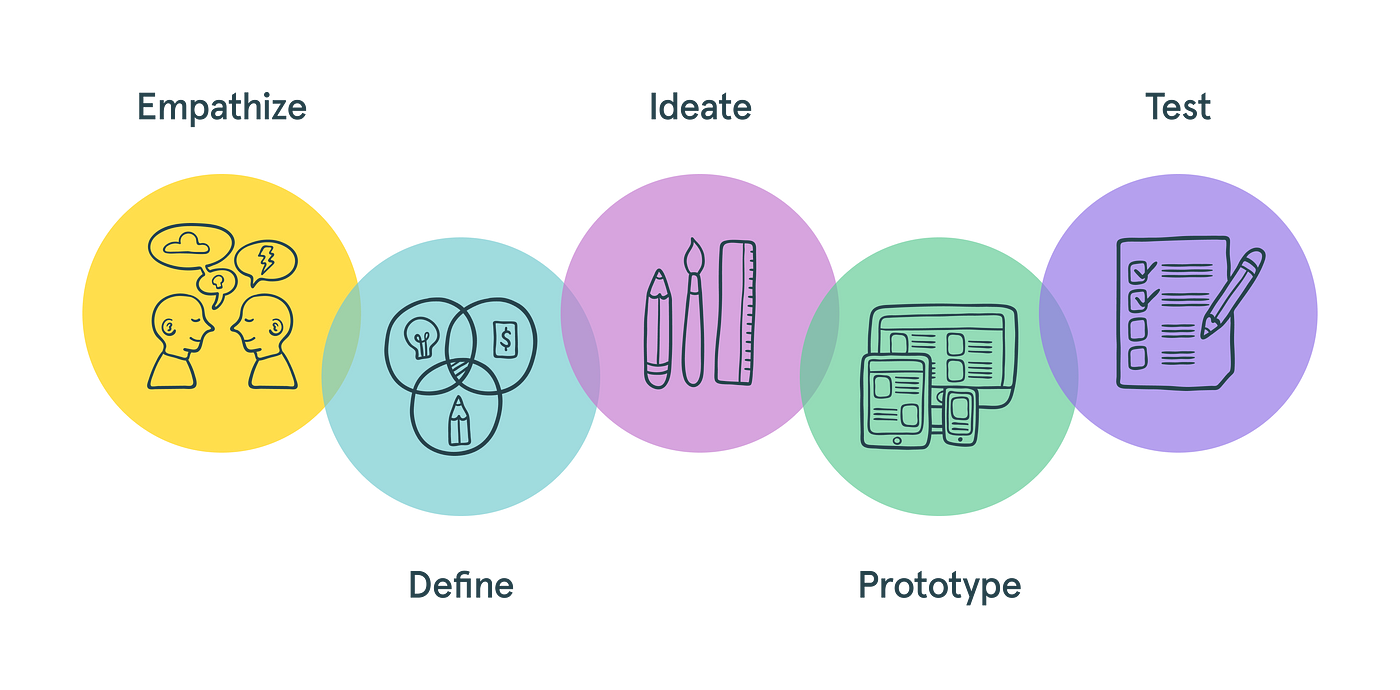Museum Explorer: Your Gateway to Discover, Experience, and Plan Art Journeys
ArtExplore simplifies museum visits by helping users discover exhibitions, access information, and schedule visits seamlessly.
May 2024-June 2024 (5 Weeks)
UI/UX Designer
Figma
Problem Statement
Museum visitors struggle to stay informed about exhibitions and events, access detailed museum information and often miss out on exhibitions and events due to the lack of a centralised and user-friendly digital solution.
Solution
ArtExplore provides a streamlined digital platform that enables users to discover exhibitions, access comprehensive museum details, and effortlessly schedule visits, enhancing convenience and enriching the overall museum experience.
Design Process

Design Process: Empathise, Define, Ideate, Prototype, Test
Research Summary
The research for Museum Explorer aimed to understand the pain points of museum visitors when discovering exhibitions, accessing essential information, and planning visits. Through interviews and surveys, it became evident that users often find it challenging to stay informed about ongoing and upcoming events due to scattered or insufficient information. Additionally, the lack of a streamlined scheduling system makes planning visits cumbersome, detracting from the overall experience. Visitors expressed a clear need for a centralized digital platform that provides comprehensive details about exhibitions, personalized updates, and seamless scheduling options. These insights guided the development of Museum Explorer, ensuring it directly addresses user frustrations and enhances the museum-going experience.
User Research Pain Points
Planning- Unable to plan visits to museum and book ticket in advance
Updates- Unable to plan visits to museum and book ticket in advance
Guidance- Do not have proper museum guidance
Accessibility- Platforms already available are not well equipped with assistive technology.
User Persona
To design an effective solution, we created a user persona representing our target audience. This persona helped shape Museum Explorer’s design, ensuring it meets the needs and expectations of its primary users.
User Journey Map
Creating Emily's User Journey Map revealed all the pain points and how solving them would benefit users to have access to a dedicated Museum App.
Empathy Diagram
The empathy map provided me a deeper understanding of my target users by capturing their thoughts, feelings, actions, and pain points. It helped me empathise with users' experiences and design a solution that addresses their needs effectively.
Sitemap
Building the sitemap was a key step in organising Museum Explorer’s content and ensuring intuitive navigation. It helped me structure the app, placing features like "Exhibitions," "Explore," and "profile" in accessible, logical positions. By visualising the user flow, the sitemap ensured a seamless and user-friendly experience, guiding the design process and aligning with user needs to create a smooth and efficient journey.
Paper Wireframes
Creating paper wireframes was an essential step in sketching out Museum Explorer’s initial design concepts. I used simple hand-drawn sketches to quickly visualise the layout and flow of the app and website. It provided a solid foundation for further design development.
Low-fidelity Wireframe
Once the paper wireframes were refined, I transitioned to low-fidelity wireframes. These digital wireframes provided a more structured, detailed look at the app’s layout and navigation, focusing on functionality rather than aesthetics. It helped me test and validate user flows, ensuring the placement of elements like buttons and menus supported an intuitive user journey. This stage allowed me to make early adjustments before moving on to high-fidelity designs, ensuring a user-friendly and cohesive experience for Museum Explorer.
Usability Study
Before moving onto high fidelity wireframes I selected 5 participants for user interviews that matched my target audience, so that I can refine my design
After conducting usability study and working on constant feedback:
I switched the search icon in navigation bar with a notification icon and created a new screen for notification.
I added a new screen for Mode of payment.
Added an option for people to like their favourite exhibitions to be able to view later. A new page for 'liked exhibitions' was added.
People want to frequently access their liked exhibitions, so settings was replaced with like button in navigation bar.
High-fidelity Wireframe
The high-fidelity wireframes were the next step in refining Museum Explorer’s design. At this stage, I focused on incorporating the actual visual elements, such as colors, fonts, and detailed spacing, to bring the design closer to the final version. These wireframes allowed me to visualise the user interface with much greater accuracy, providing a realistic representation of how the app would look and function.
High-fidelity Prototyping
Once the high-fidelity wireframes were finalized, I moved on to prototyping. This phase involved turning the static wireframes into interactive prototypes that users could navigate through. The prototype allowed me to simulate user interactions
Final Round of Usability Testing
In the final round of usability testing, I focused on identifying and correcting any remaining glitches in the prototype. Users interacted with the app and provided feedback on the overall flow, interface, and functionality. Based on their input, I made necessary adjustments to refine interactions, fix minor bugs, and improve the overall user experience. This final round helped ensure that Museum Explorer was fully optimised and user-friendly.
Conclusion
The design process for Museum Explorer focused on creating a user-friendly platform that addresses the needs of museum visitors. Through research, iterative design, and testing, I developed an app that streamline the discovery of exhibitions and visit planning. This project reinforced the importance of user-centred design and provided a solid foundation for future enhancements.








